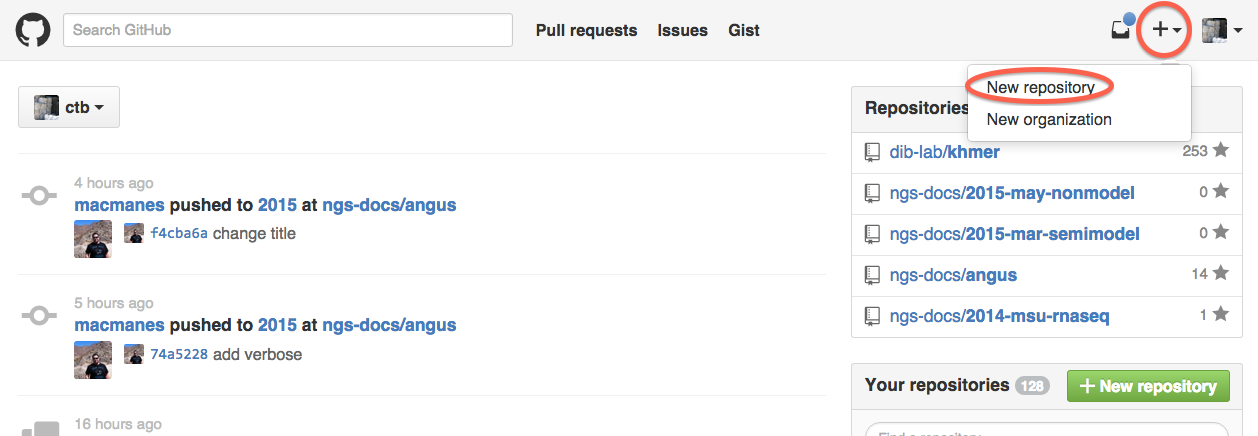Using GitHub repositories to store your scripts¶
Second, name your repository.¶
Something like ‘rnaseq-scripts’ is fine! Be sure to check the ‘initialize’ box.

Third, clone your repository¶
Get your GitHub repository url (https://github.com/ctb/rnaseq-scripts.git is mine, in this example);

Then, on your remote UNIX machine, do:
git clone https://github.com/ctb/rnaseq-scripts.git
This will create a new directory named rnaseq-scripts with a single
‘README.md` file in it.
Fourth, add, commit, and push scripts¶
The following commands are useful:
git add script.txtwill add the file script.txt into your local git repository.git commit -am "some message"will save the latest version of the script into your local git repositorygit push originwill send your committed versions to github, where they will be safe.
Other commands:
git logwill show you your history.git pullwill update your command-line repository from your GitHub account.
LICENSE: This documentation and all textual/graphic site content is licensed under the Creative Commons - 0 License (CC0) -- fork @ github. Presentations (PPT/PDF) and PDFs are the property of their respective owners and are under the terms indicated within the presentation.
comments powered by Disqus
